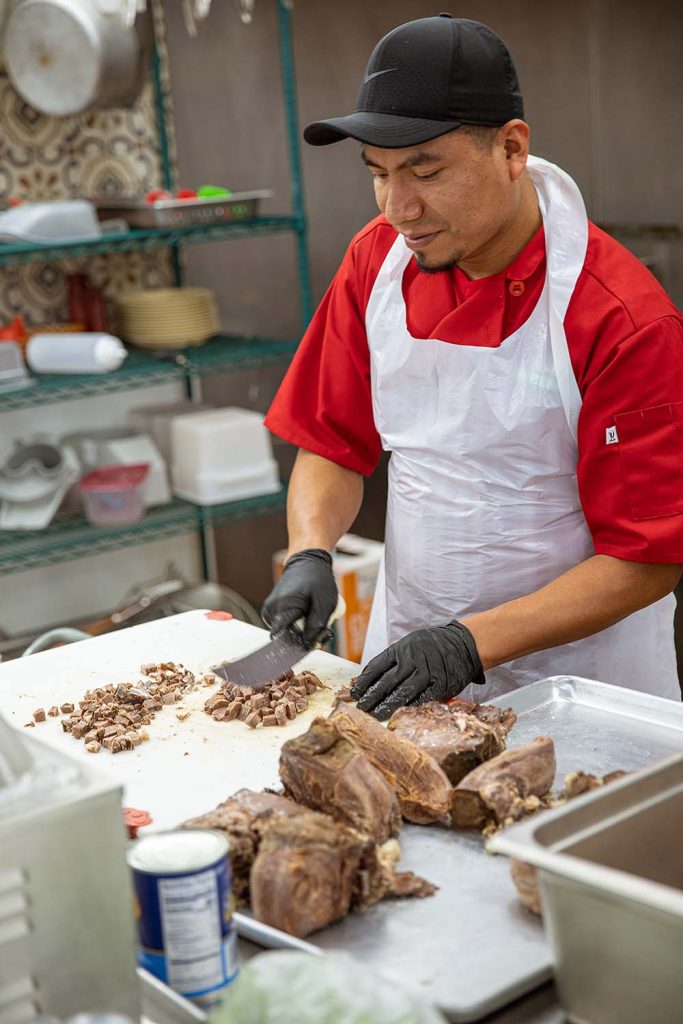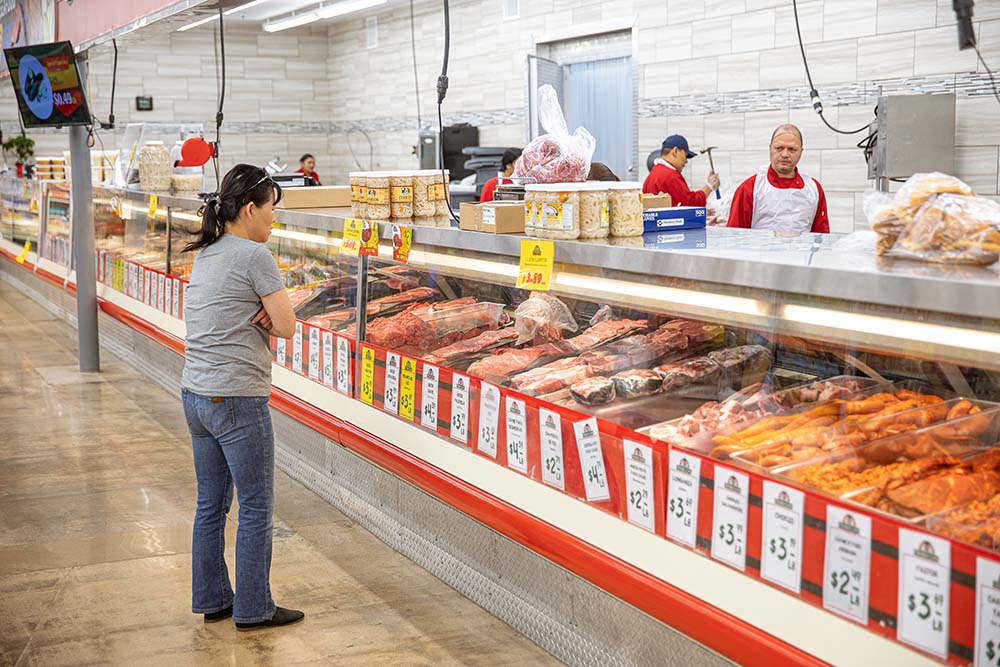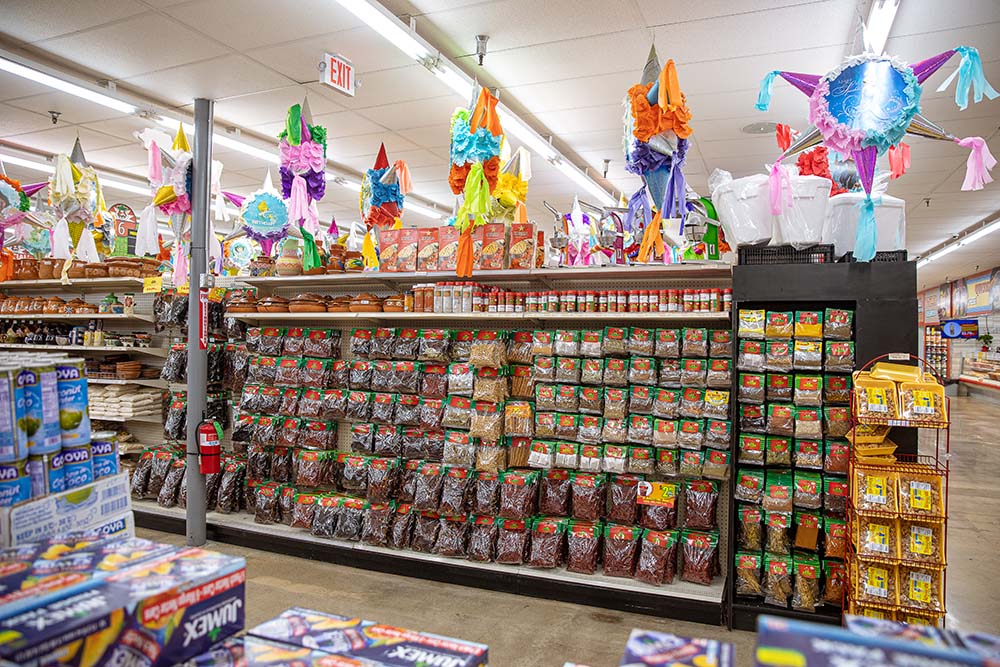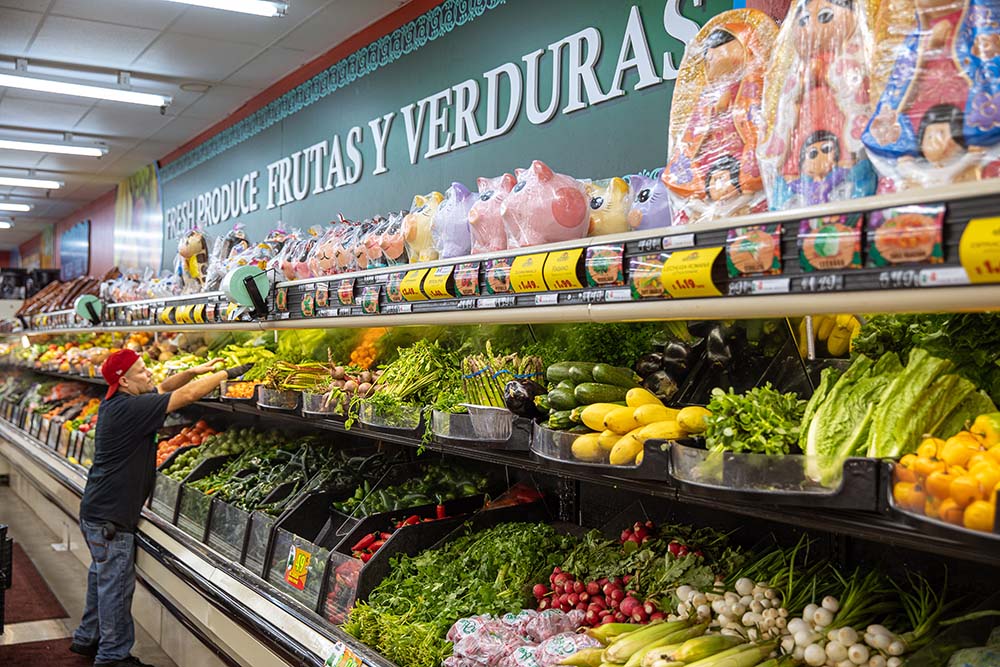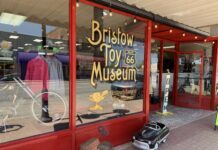A foray into a Hispanic supermarket is a journey of the senses – lilting mariachi music, bright colors and the scent of fresh tortillas.
One can find Salvadoran-style crema, tamarind-flavored candy and produce you can’t find anywhere else, like cactus paddles, prickly pears, calabacita (Mexican squash) and aloe leaves.
Supermercados – Spanish for supermarkets – have popped up throughout Oklahoma to meet the demand for authentic food ingredients from a growing Hispanic population and as second- and third-generation Latinos/Latinas seek connections to their culture.
Since 2010, the state’s Hispanic population has risen 26 percent to more than 400,000 people, according to the U.S. Census Bureau. It’s still growing.
This surge has created a vibrant potential for the supermercado industry throughout the state, says David Castillo, president of the Oklahoma City Hispanic Chamber of Commerce.
“Hispanics in Oklahoma have $7 billion in buying power,” he says. “It’s basically new money – a new market for businesses and more tax money for cities and the state.”
Two family-owned chains dominate the state’s supermercado landscape. Supermercados Morelos has four stores in Tulsa and four in metropolitan Oklahoma City, while Supermercados Las Américas has four locations in Tulsa and one in Muskogee.
Greater Oklahoma City also has four Buy for Less Supermercados, as well as many mom-and-pop Hispanic meat markets and grocers. These smaller stores can also be found throughout the state.
“As the Hispanic community grows, the need for supermercados grows as well,” said Francisco Ibarra, co-owner of Supermercados Morelos.
Finding familiar food products from people’s motherlands boosts the quality of life for the Hispanic community.
“When I first came to America 33 years ago, I couldn’t find any of the ingredients from home,” says Margarita Vega, public relations manager for Supermercados Morelos. “It was really hard; it adds to that homesick feeling.”
Going to a supermercado is an experience to be shared with family.
“One of the strategies is to make the aisles wider because Hispanics bring more family members to shop with them,” Castillo says. “Some people come in every day to pick up fresh meat and produce for that evening’s meal.”
Supermercados extend beyond the Latino/Latina community. Ibarra says he expects to open several more Supermercados Morelos in the next three years, particularly in underserved areas known as food deserts. About 20 percent of Supermercados Morelos customers are African-American, Indian, Asian or anglo, says Vega, adding that common favorites among all customers include “beef tripe, pigs’ feet, oxtails, chitterlings and whole fish. They’re not going to find those cuts anywhere else.”
The popularity of America’s foodie culture has also expanded the appeal of ethnic grocery stores.
“Most people not only like Mexican food – they love it,” Vega says. “People are searching for authentic ingredients that they can use to prepare new cuisines at home and heighten their cultural experience.”
Oklahoma Hispanic populations and percentages
Following are the 20 Oklahoma cities with the largest number of Hispanic residents and their respective percentages of those municipal populations.
Oklahoma City 110,038 (17%)
Tulsa 55,266 (14%)
Lawton 12,160 (13%)
Norman 7,082 (6%)
Broken Arrow 6,378 (6%)
Guymon 5,896 (52%)
Enid 5,066 (10%)
Moore 4,900 (9%)
Altus 4,699 (24%)
Edmond 4,144 (5%)
Midwest City 3,019 (6%)
Muskogee 2,781 (7%)
Bethany 2,546 (13%)
Clinton 2,512 (28%)
Watonga 2,424 (47%)
El Reno 2,156 (13%)
Bartlesville 2,112 (6%)
Duncan 2,085 (9%)
Warr Acres 2,030 (20%)
Stillwater 1,947 (4%)
























